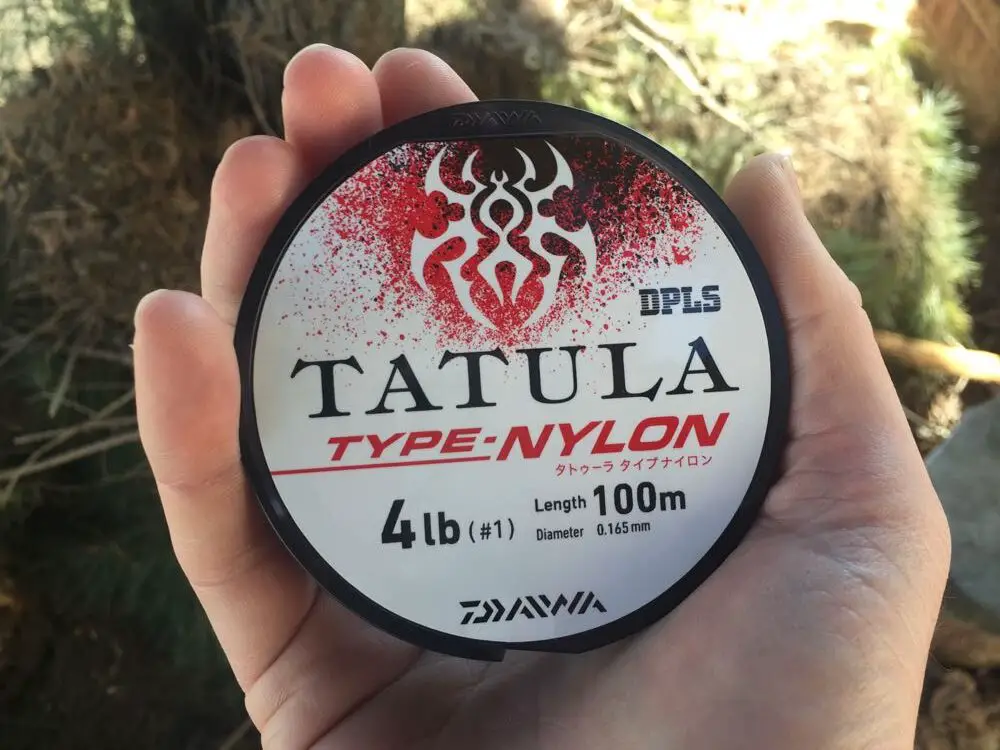When it comes to trout fishing with lures or spinners, the difference in catch rates between 2lb, 4lb, and 6lb lines is usually minimal. Even large and wary wild brown trout in clear water can be caught successfully with 6lb line. I have caught plenty on even 8lb breaking strain line.
However, in fly fishing, the story changes. While 7lb or 8lb tippets can be effective without alarming the trout. In situations where trout are line shy due to heavy fishing pressure or clear water conditions, dropping down to 2lb line can lead to more success. This is not because of the trout seeing the line, but because thinner line typically creates less drag.
Finding the right balance in line selection can make a significant difference in your trout fishing experience. In the next section, we’ll explore the factors that influence trout behavior in fly fishing scenarios.
Advantages of thinner line
Thin line is harder for the trout to see, it also creates less resistance through the water. This means it does not dull the action of a lure as much as heavier line.
1) Trout have excellent senses, not only can they see the line. They can also sense the line, thicker diameter lines create more vibrations through the water, which can give the trout the impression that something ‘large’ is lurking nearby. Trout do not know what it is, but they are less likely to leave the relative safety of their lay to strike when there is an unknown presence in the water.
2) Fishing line, excluding braid but including monofilament and fluorocarbon is nearly invisible in the water. But the shadow the line casts is real, and has the potential of spooking fish. I will go as far to claim, that more trout will be spooked by the shadow of the line than the line itself. Again, the shadow is an unknown, and trout are rarely willing to take any risks. So a thinner line, creates a thinner shadow which is less likely to spook fish.
3) Thicker line can dull the action of lures which can discourage trout from striking. Most lures work best when they can move freely and ‘dance’ through the water. Thick line can weigh down a light lure dulling it action.
4) Thin line casts further than thicker line. This is even more apparent when we are trying to cast out tiny lightweight lures. Casting distance is not always important, but sometimes it is essential. The further away from the trout we stand, the less likely we are to spook them. Being able to cast further is nearly always a positive.
5) Tiny hooks, require thin line. If you are planning on fishing flies beneath a bopper, or even tailing one behind a lure. Sometimes the eye on the flies hook is so tiny that it requires a small diameter line. It can be challenging to thread 8lb monofilament through the eye of a size 20 dry fly. Having 2lb line on your reel certainly makes it easier to tie on tiny flies.
6) Thin line provides slightly more sensitivity. It is easier to feel slight movements and bumps at the end of the line.
7) Thinner line sinks faster through the water column and create less drag. This feature does not really matter when spin fishing but can make a difference when fishing with lightweight flies.
Disadvantages of thinner line.
1) The main disadvantage is that thinner line is easier to break. It is also less resistant to abrasion. When trout fishing with 2lb line a lot more care needs to be taken to keep the line free of damage. Even a tiny nick can result in a lost fish.
2) Thinner line is generally more expensive. Not only does it take more line to full a spool, it also needs to be replaced more often.
3) Thin line can be difficult to see. Which can make tying knots challenging.
Where to fish 2lb line?
While it is true that 2lb line can give you a slight edge when targeting trout late in the season when they have become line shy. The downsides are rarely worth the extra chance of breaking off.
2lb line is very light, and easy to snap so it is a good idea to only fish it in areas with few snags This means avoiding prime trout holding features such as weed lines and submerged trees. Most anglers use it to catch trout in ponds and lakes with clean bottoms.
Another, feature of 2lb line is that it can be used to increase the difficulty of the fight. Some fishermen use it to practice their fighting technique, although it does tire trout out meaning they are less likely to survive if released.
Where to fish 4lb or heavier trout lines?
4lb and 6lb line is the staple of trout fishing. It is the breaking strain most commonly used. I advise using 4lb over 2lb in the following conditions
- – In streams and rivers
- – When the water is dirty
- -When fishing around weed or structure.
- -When the trout are larger than pan size.
- -When the water is warm, and you need to finish the fight fast.
- -When you have less than perfect knots
- -When you are fishing with expensive tackle you can not afford to lose.
When to use a thin tippet when fly fishing?
Using a thinner tippet in fly fishing can be beneficial in specific situations to increase your chances of catching trout. Here are some scenarios when it’s advantageous to use a thinner tippet:
1. Line Shy Trout: In waters with heavy fishing pressure or where trout have become cautious due to clear conditions, a thinner tippet can reduce visibility and make your presentation more natural. Trout are less likely to be spooked by the thinner line, leading to more strikes.
2. Finicky Trout: Sometimes trout can be selective and refuse flies with thicker tippets. A thinner tippet can provide a more delicate presentation, which is crucial when imitating smaller insects or when trout are feeding selectively on specific patterns.
3. Clear Water Conditions: In crystal clear water, trout have a clear view of the leader and tippet. Using a thinner tippet can make your fly appear more realistic and increase your chances of fooling wary trout.
4. Smaller Flies: When using smaller fly patterns, especially for dry fly fishing, a thinner tippet is essential to maintain a natural drift and prevent the trout from detecting any unnatural drag.
5. Lighter Rods and Lines: If you’re using a lighter weight fly rod and line, matching it with a thinner tippet ensures better balance and a smoother casting experience.
6. Delicate Presentations: In situations where precise casting and delicate presentations are necessary, a thinner tippet helps achieve a gentle landing of the fly on the water’s surface.
7. Stealthy Approaches: When stalking trout in calm water or shallow areas, a thinner tippet aids in maintaining a stealthy approach and increases your chances of getting closer to the fish without alarming them.
What are the best ultra-thin lines for trout fishing?
There is not a lot of true 2lb lines on the market. I can highly recommend 2lb Maxima Ultragreen. From what I have heard from other trout anglers, this might just be the most used 2lb line on the market. Berkley Trilenle XL also comes in 2lb but I do not have any personal experience with it. Both of these lines have a diameter of 0.05”.
Alternatively, you can go for a slightly thicker 2lb Trout Magnet SOS or 4lb Sunline Super Natural which have a diameter of 0.06”. This is still significantly thinner than most 4lb lines which typically measure 0.008” in diameter. The trout Magnet SOS is also the most affordable ultrathin line.
For more information on the best monofilament for trout fishing, I suggest checking out my guide here.
Not all 2lb lines are created equal
There are plenty of 4lb lines, with the same diameter as 6lb lines. I have even seen so called 2lb line which is just as thick as 4lb lines. What is written on the boxes can not really be trusted.
For example 2lb Trout Magnet SOS is the same diameter as 4lb Sunline Super Natural. The reason why, 2lb trout magnet is actually a stronger line. It is closer in strength (and thickness) to 4lb than it is to 2lb.

